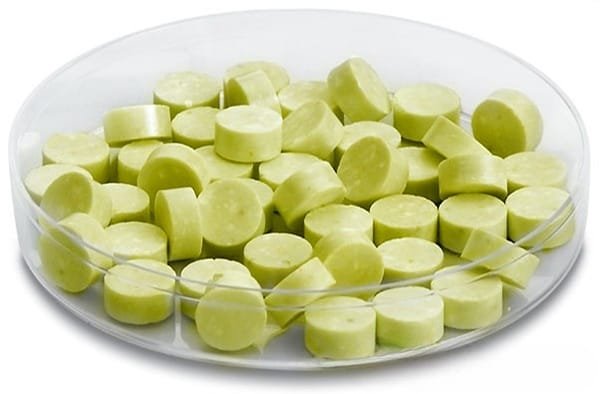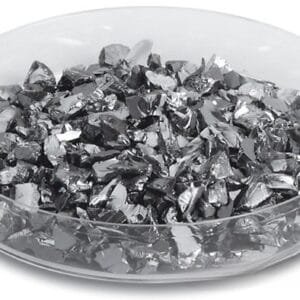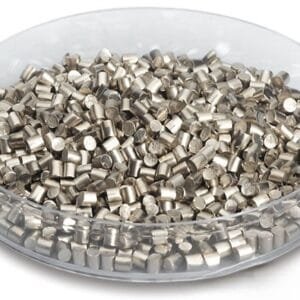Indium Tin Oxide (ITO) Evaporation Materials Overview
Indium Tin Oxide (ITO) is a highly utilized compound in the thin film industry, known for its exceptional electrical conductivity and optical transparency. The 90/10 WT% composition of indium oxide (In₂O₃) and tin oxide (SnO₂) is particularly favored, with a melting point of approximately 1,800°C and a density of 7.14 g/cm³. ITO thin films are critical in developing sensors and serve as a glass coating in the automotive industry.
TFM offers high-purity ITO evaporation materials with up to 99.9995% purity. These materials are essential in deposition processes, ensuring the creation of high-quality films. TFM’s rigorous quality assurance processes guarantee product reliability and consistency.
Related Products: Indium Evaporation Materials, Tin Evaporation Materials
Indium Tin Oxide Evaporation Materials Specification
| Material Type | Indium Tin Oxide |
| Symbol | ITO |
| Color/Appearance | Pale yellow to greenish-yellow |
| Melting Point | 1,800°C |
| Density | 7.14 g/m3 |
| Purity | 99.5% ~ 99.99% |
| Shape | Powder/ Granule/ Custom-made |
Applications of Indium Tin Oxide (ITO) Evaporation Materials
ITO evaporation materials are widely used in various high-tech applications, including:
- Deposition Processes: Ideal for semiconductor deposition, chemical vapor deposition (CVD), and physical vapor deposition (PVD).
- Optical Applications: Used in wear protection, decorative coatings, and display technologies.
Packaging and Handling
TFM ensures that all indium tin oxide evaporation materials are clearly tagged and labeled for efficient identification and strict quality control. Our packaging methods are designed to protect the materials from any damage during storage or transportation, ensuring they reach you in perfect condition.
Contact TFM
As a leading provider of high-purity indium tin oxide evaporation materials, TFM offers a variety of shapes, including tablets, granules, rods, and wires. We can also cater to custom specifications and quantities upon request. In addition, TFM supplies a wide range of related products, including evaporation sources, boats, filaments, crucibles, heaters, and e-beam crucible liners. For pricing and inquiries regarding our evaporation materials or other products, please feel free to contact us.
Ordering Table
| Material | Size | Quantity | Purity | Part Number |
| Indium Tin Oxide | 1/8" - 1/4" Pieces | 1 lb. | 99.99% | EVMITO40 |
| Indium Tin Oxide | 1/8" - 1/4" Pieces | 25 g | 99.99% | EVMITO40A |
| Indium Tin Oxide | 1/8" - 1/4" Pieces | 50 g | 99.99% | EVMITO40B |
| Indium Tin Oxide | 1/8" - 1/4" Pieces | 100 g | 99.99% | EVMITO40D |
| Indium Tin Oxide | 1/8" - 1/4" Pieces | 250 g | 99.99% | EVMITO40J |
| Indium Tin Oxide | 1/8" - 1/4" Pieces | 1 kg | 99.99% | EVMITO40KG |
| Indium Tin Oxide | 1/8" - 1/4" Pieces | 500 g | 99.99% | EVMITO40T |


 MSDS File
MSDS File



Reviews
There are no reviews yet.